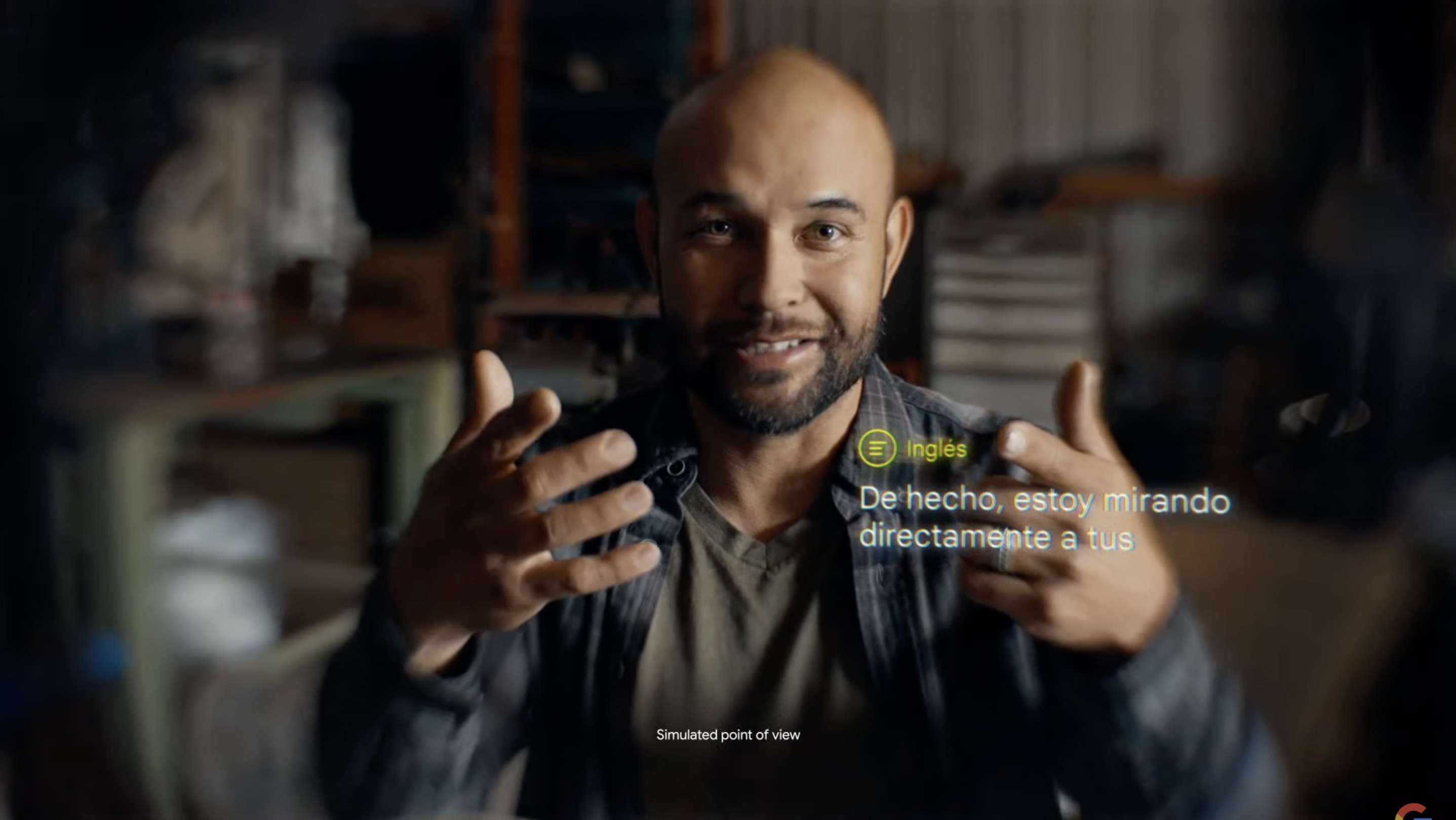Google just gave us a reason to put on AR glasses
Prototype glasses can display real-time language translation

Nearly a decade after the release of Google Glass, Google may have found a use for augmented reality glasses that doesn't make people point and laugh.
Wrapping up the Google I/O keynote today (May 11), CEO Sundar Pichai talked about Google's vision for AR. "The magic [of AR] will really come alive when you can use it in the real world without the technology getting in the way," Pichai said. "That potential is what gets us most excited about AR — the ability to spend time focusing on what matters in the real world in our real lives."
To that end, Google showed off a video featuring a pair of AR glasses that had the ability to superimpose real-time translation in the vision of whoever is wearing the glasses. Max Spear, a Google product manager, described the effect as "kind of like subtitles for the world."
In Google's demo video, a mother who speaks Mandarin is able to see her English-speaking daughter's words translated into her native language. The translation floats right in the line of sight without obscuring the speaker.

Google says the glasses draw on the work it's been doing for years on Google Translate, which also offers real-time translation features across multiple languages.
In addition to language translation, the glasses also would be of value to people with hearing impairments, allowing them to see a real-time transcript of a conversation or presentation even if they can't hear it.
The AR glasses look like ordinary eyewear, though the frames are on the thick side. Pichai described them as "early prototypes" and gave no hint as to whether they'll wind up as a commercial product.
Sign up to get the BEST of Tom's Guide direct to your inbox.
Get instant access to breaking news, the hottest reviews, great deals and helpful tips.
Still, that may be beside the point of the demo. Google was showing off how AR can be more than cool parlor trick, enabling something that real makes a difference in other people's lives. And if you're skeptical of AR headsets and glasses, that kind of feature set may get you to change your tune.
Philip Michaels is a Managing Editor at Tom's Guide. He's been covering personal technology since 1999 and was in the building when Steve Jobs showed off the iPhone for the first time. He's been evaluating smartphones since that first iPhone debuted in 2007, and he's been following phone carriers and smartphone plans since 2015. He has strong opinions about Apple, the Oakland Athletics, old movies and proper butchery techniques. Follow him at @PhilipMichaels.

